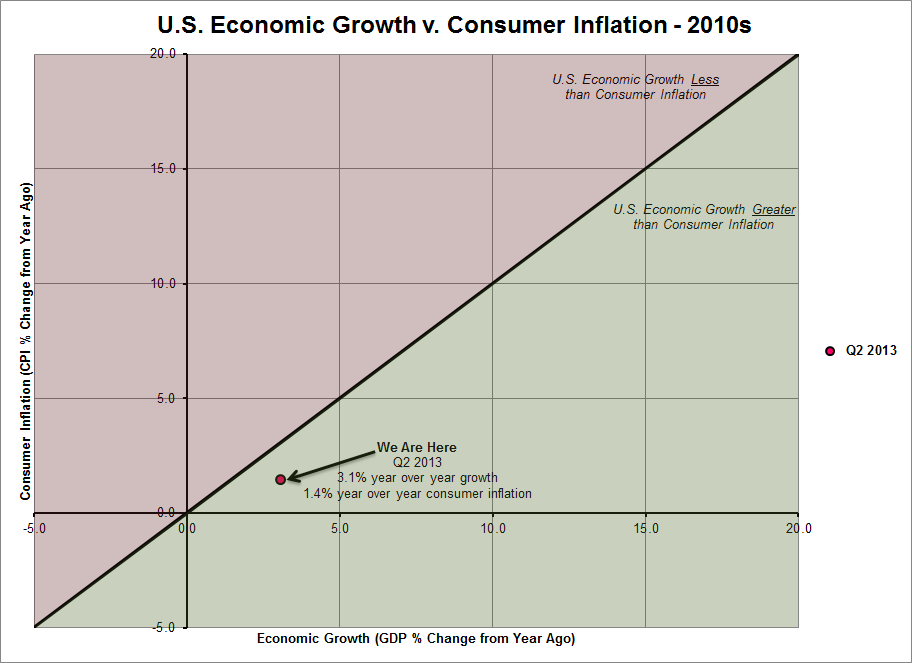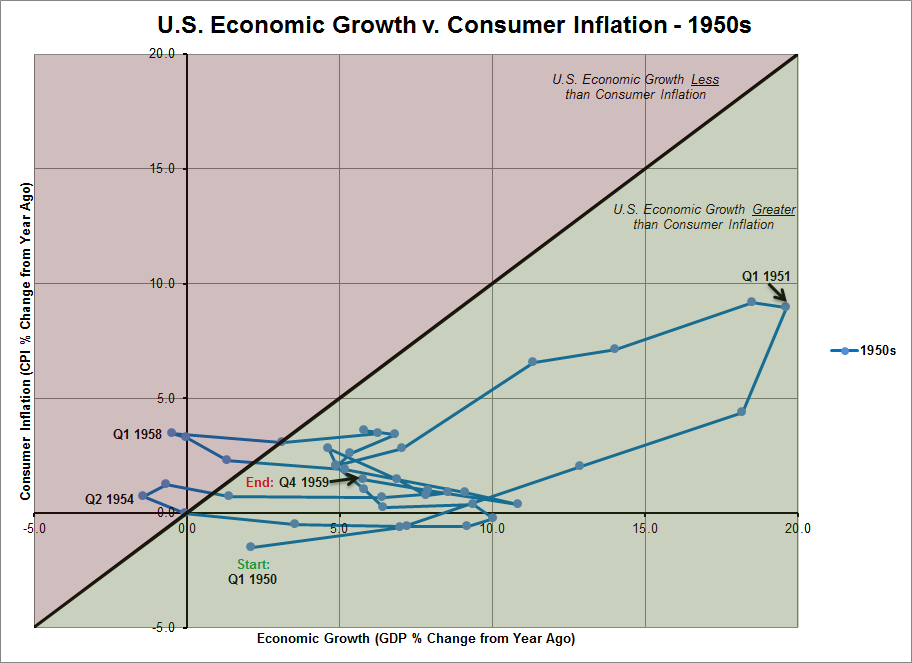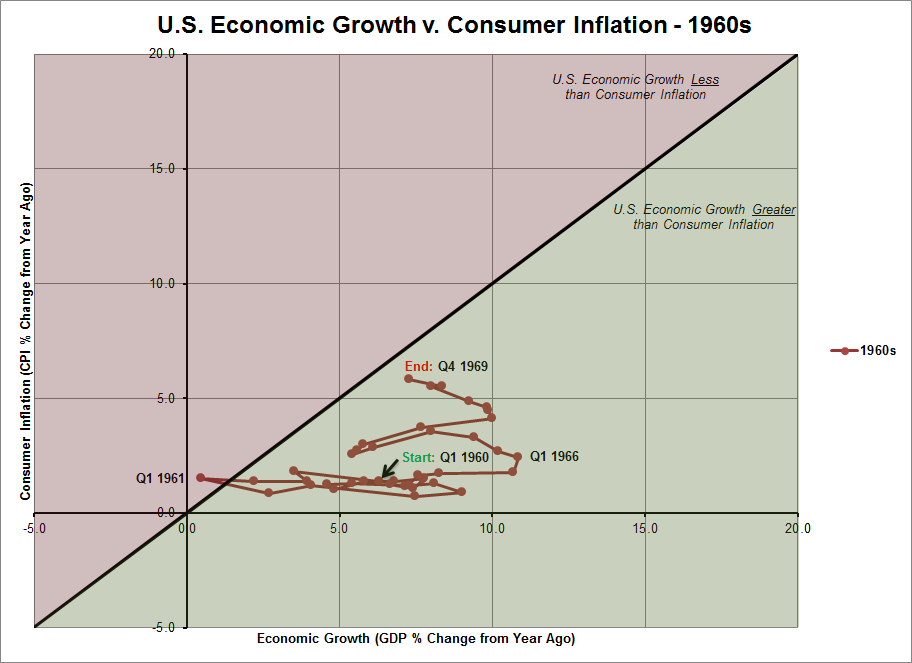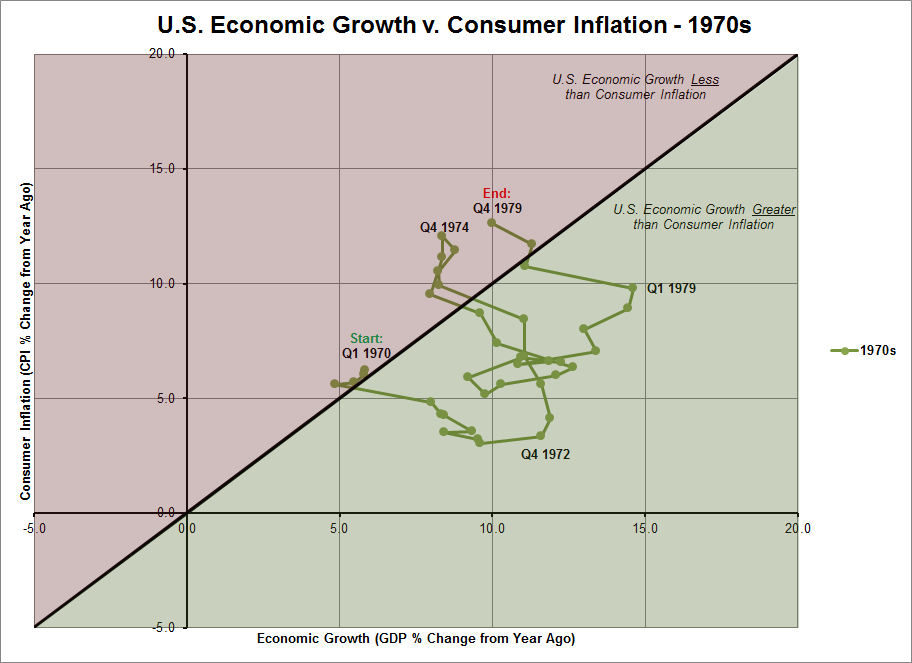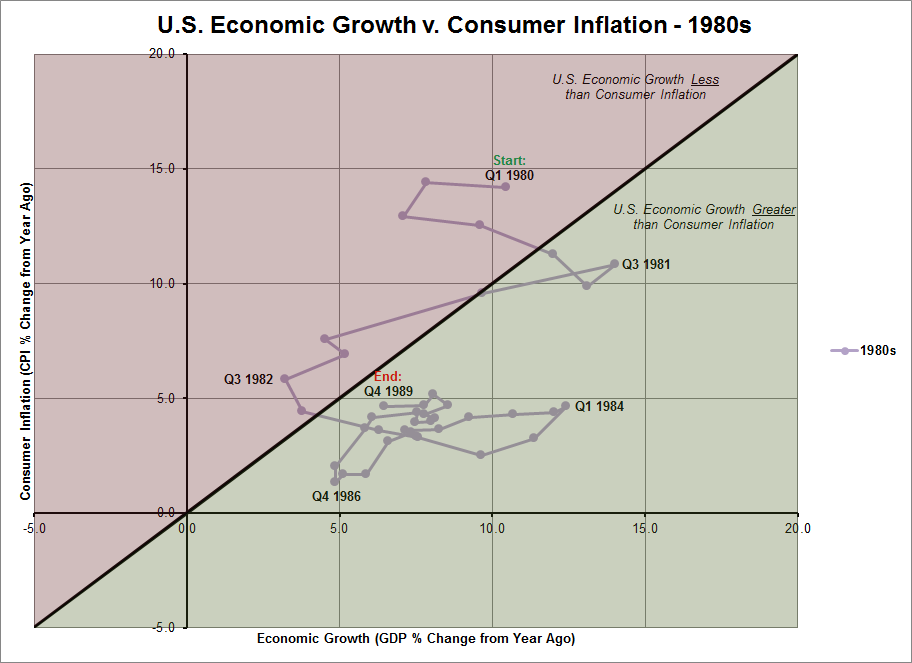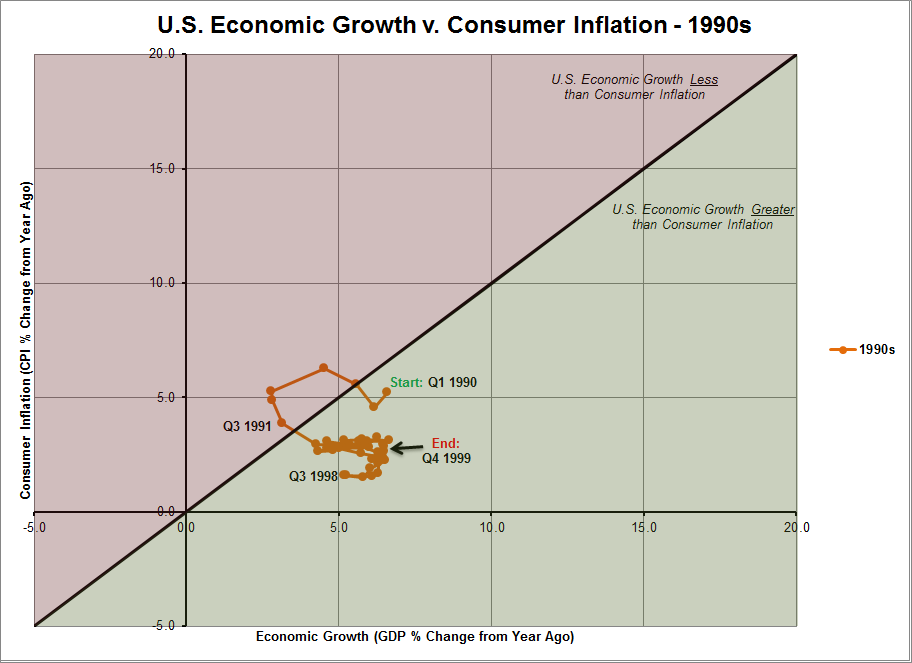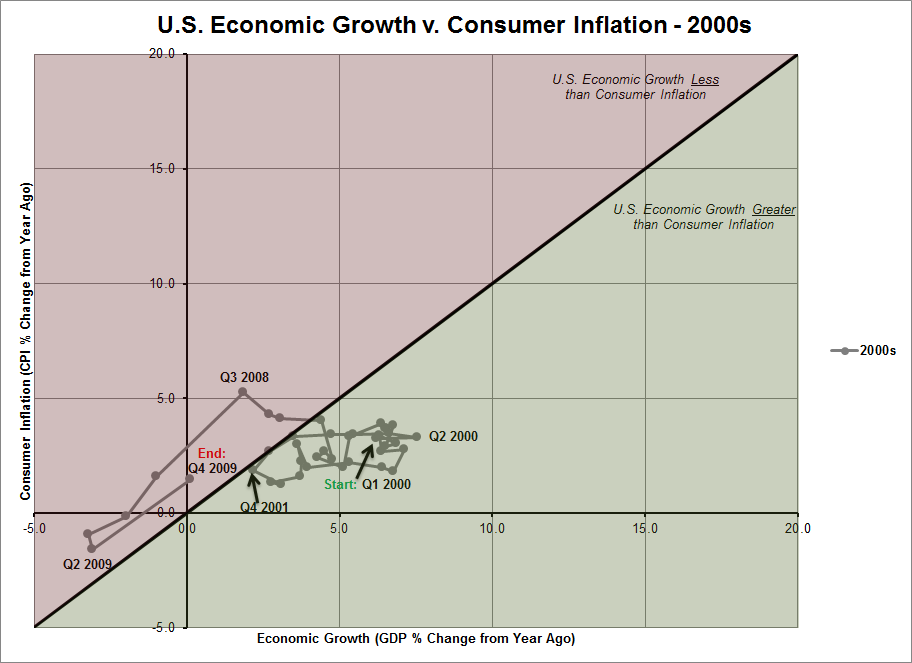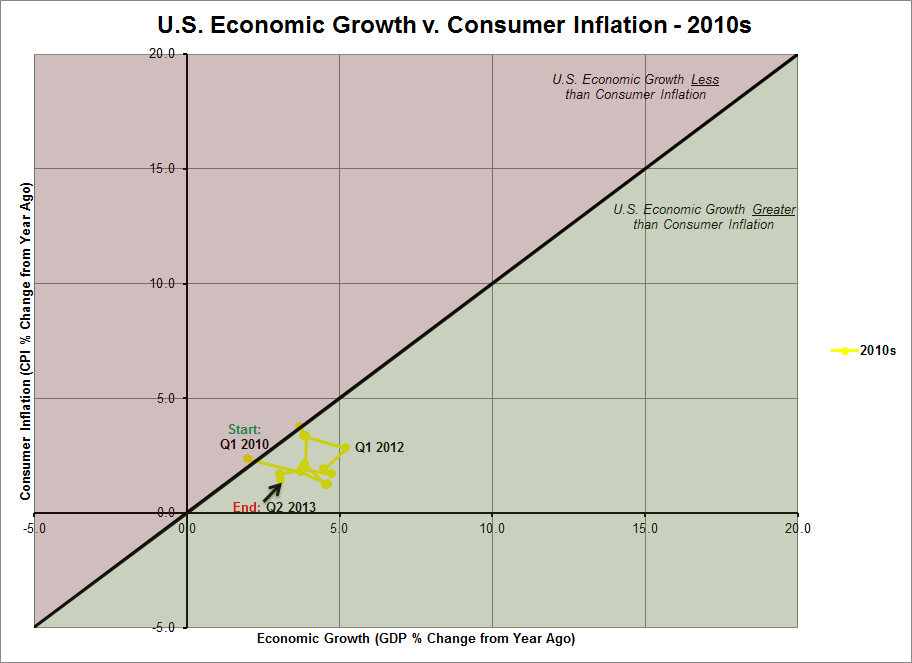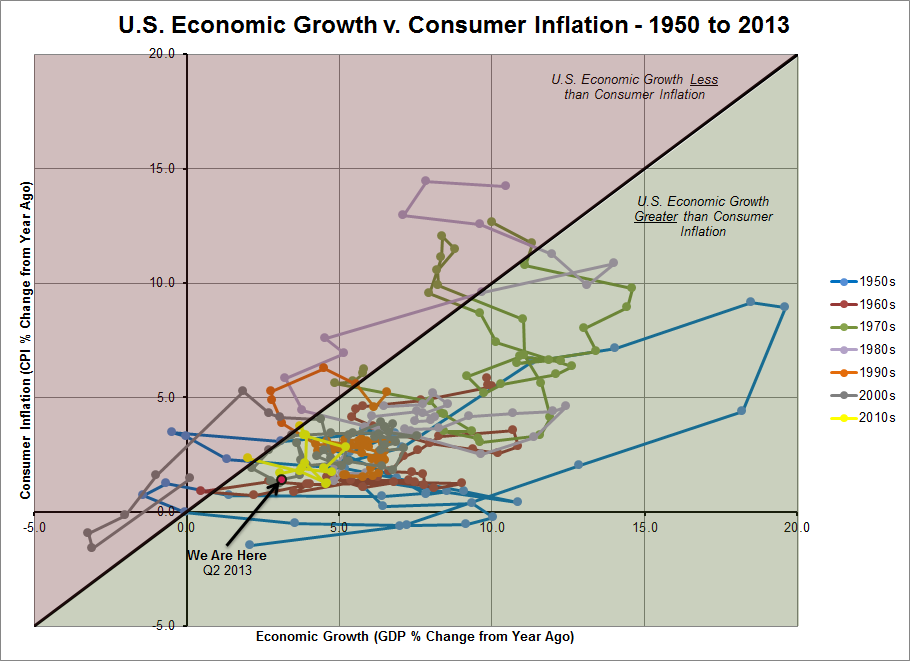Two important economic data points to gauge the health of the U.S. economy are economic growth (as measured by gross domestic product changes) and consumer price changes (inflation/deflation)
Given these two pieces of data where does the U.S. economy stand today?
The United States economy grew by 3.1% from Q2 2012 to Q2 2013.
Over that same period consumer prices increased by 1.4%.
The pink dot below plots these coordinates and illustrates that, in the U.S., economic growth was greater than consumer inflation over the period (falling in the green shaded half). This is certainly a good thing, but how does it stack up relative to the last sixty plus years?
The early 1950s were unlike any other time period in the U.S. during the past sixty three years. Economic growth was positive but consumer prices were falling (deflation). A possible explanation for this phenomenon includes the fact that the U.S. was collectively achieving massive productivity gains. The economy expanded fairly rapidly after 1950 and consumer prices began to rise.
The economy was in recession during late 1953 and early 1954 as well as late 1957 and early 1958. During both these time periods the economy was shrinking and consumer prices were rising modestly.
The 1960s were a fairly stable decade. Outside of 1960 to early 1961 (when the U.S. was in a recession) year over year growth in the economy was strong and consumer prices increased only modestly.
During the 1970s the U.S. economy saw consumer prices rise rather rapidly. At times economic growth was unable to keep up with this inflation. As the chart below indicates, during the early, mid and late 1970s the coordinates of economic growth and consumer inflation were in the red shaded region; all unhealthy time periods for the U.S.
Over the 1980s consumer inflation started to moderate from the large increases of the 1970s. Outside of the early 1980s when consumer inflation was coming under control the U.S. economy was growing at a faster rate than inflation.
For very nearly the entirety of the 1990s U.S. economic growth was strong and consumer price increases were only moderate. This was the most stable decade and similar, in some respects, to the prosperity of the 1960s.
Despite a small recession in 2001 the first seven years of the 2000s were similar to the 1990s. By 2008, however the economy began to shrink. Shortly thereafter consumer prices fell.
On the heals of the Great Recession (2008-2009) the U.S. economy began to recover and consumer prices began to rise. Both however were quite modest.
As the final chart depicts the last three years have been characterized by, historically speaking, only modest economic growth and relatively tame consumer inflation.
Data Source: U.S. Department of Commerce: Bureau of Economic Analysis
